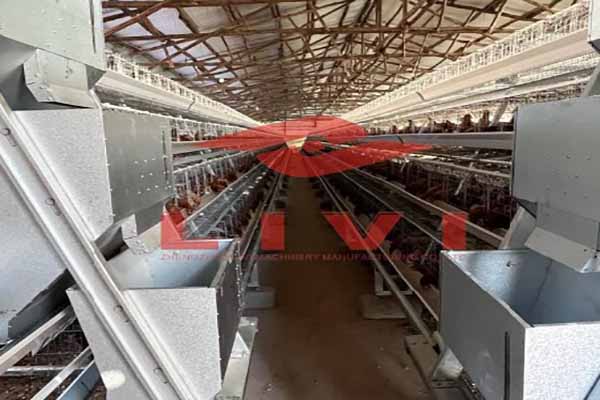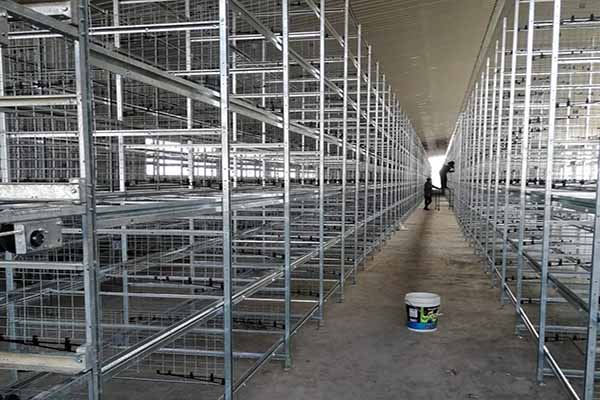How to Reduce Mortality in Kenyan Chicken Farms: A Comprehensive Guide
Time : 2025-06-28
In the dynamic and competitive poultry industry of Kenya, reducing mortality rates in chicken farms is a top priority for farmers and stakeholders alike. High mortality can lead to significant financial losses and affect the overall productivity and sustainability of the farm. This article delves into the essential strategies and professional equipment knowledge that can help Kenyan chicken farmers minimize mortality rates.
Understanding the Causes of Mortality in Chicken Farms
Mortality in chicken farms can be attributed to various factors, including disease, environmental stress, nutritional deficiencies, and management practices. By identifying these causes, farmers can take targeted measures to reduce mortality rates.
Disease Prevention and Control
One of the leading causes of mortality in chicken farms is disease. Vaccination programs, biosecurity measures, and regular health checks are crucial in preventing and controlling diseases.
- Vaccination Programs: Implementing a comprehensive vaccination program can protect chickens against common diseases such as新城疫 (Newcastle disease),马立克氏病 (Marek’s disease), and传染性支气管炎 (Infectious bronchitis).
- Biosecurity Measures: Ensuring strict biosecurity protocols, such as controlled access to the farm, disinfection of equipment, and isolation of new birds, can prevent the introduction and spread of diseases.
- Regular Health Checks: Conducting regular health checks by a veterinarian can help detect and treat diseases early, minimizing their impact on mortality rates.
Environmental Management
The environment plays a critical role in the health and well-being of chickens. Here are some strategies to manage the environment effectively:
- Adequate Ventilation: Proper ventilation systems can help regulate temperature and humidity, reducing the risk of respiratory diseases.
- Lighting: Using controlled lighting schedules can simulate natural day-night cycles, which can improve egg production and reduce stress.
- Manure Management: Implementing effective manure management systems can reduce ammonia levels, which are harmful to chickens and can lead to respiratory issues.
Nutritional Management
A balanced diet is essential for the health and productivity of chickens. Consider the following aspects of nutritional management:

- Quality Feed: Provide chickens with high-quality feed that meets their nutritional requirements at each stage of growth.
- Supplements: Use appropriate supplements to address any nutritional deficiencies, such as vitamin and mineral supplements.
- Water Quality: Ensure access to clean, fresh water at all times, as dehydration can lead to health issues and increased mortality rates.
Professional Equipment for Enhanced Farm Management
Investing in professional equipment can significantly improve farm management and reduce mortality rates. Here are some key pieces of equipment to consider:
Feeding Systems
Automated feeding systems can ensure consistent feed delivery, reducing the risk of undernourishment or overfeeding.
- Automatic Feeders: These devices can be programmed to dispense feed at specific times, ensuring that chickens receive the right amount of nutrition.
- Feed Grinders: Grinding feed into smaller particles can improve digestibility and ensure that all nutrients are absorbed.
Watering Systems
Access to clean water is crucial for the health of chickens. Here are some water system options:
- Nipple Waterers: These systems provide clean water at the chicken’s beak level, reducing the risk of contamination.
- Potable Water Tanks: Ensure that water tanks are properly sanitized to prevent the growth of bacteria and algae.
Environmental Control Systems
Modern environmental control systems can help maintain optimal conditions for chickens:

- Heating and Cooling Units: These units can maintain a comfortable temperature for chickens, reducing the risk of heat stress or cold stress.
- Humidity Control Systems: Keeping humidity levels within an acceptable range can prevent respiratory diseases and other health issues.
Monitoring and Record Keeping Equipment
Monitoring equipment can help farmers identify potential issues early and make informed decisions:
- Temperature and Humidity Sensors: Real-time monitoring of environmental conditions can help farmers take immediate action if conditions become unfavorable.
- Bird Counters: Accurate counting of birds can help with inventory management and ensure that feeding and watering systems are functioning correctly.
Conclusion
Reducing mortality in Kenyan chicken farms requires a multifaceted approach that includes disease prevention, environmental management, nutritional care, and the use of professional equipment. By implementing these strategies, farmers c an improve the health and productivity of their chickens, leading to a more sustainable and profitable poultry operation.
an improve the health and productivity of their chickens, leading to a more sustainable and profitable poultry operation.











